Carnegie Learning Algebra II Student Skills Practice 1st Edition Chapter 2 Exercise 2.2 Skills Practice
Page 277 Problem 1 Answer
Here it is asked to complete the sentence
” A(n)___________________is one of a set of key points that help identify the basic function “.
So here the answer is The reference point.
Therefore, the reference point is one of a set of key points that help identify the basic function.
Page 277 Problem 2 Answer
Here it is asked to complete the sentence
” The mapping, or movement, of all the points of a figure in a plane according to a common operation is called a(n)__________ “.
So here the answer is Transformation.
Therefore, the mapping, or movement, of all the points of a figure in a plane according to a common operation is called a transformation.
Carnegie Learning Algebra Ii Chapter 2 Exercise 2.2 Solutions
Carnegie Learning Algebra II Student Skills Practice 1st Edition Chapter 2 Exercise 2.2 Skills Practice Page 277 Problem 3 Answer
Here it is asked to complete the sentence
” The ______________ is the variable, term, or expression on which the function operates “.
So here the answer is The argument of a function.
Therefore, the argument of a function is the variable, term, or expression on which the function operates.
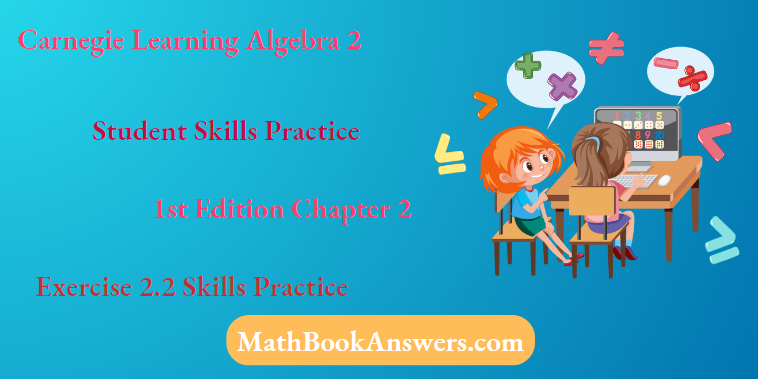
Page 277 Problem 4 Answer
Here it is asked to complete the sentence
” A(n)___________ is a type of transformation that shifts an entire figure or graph the same distance and direction.
So here the answer is Translation.
Therefore, a translation is a type of transformation that shifts an entire figure or graph the same distance and direction.
Page 278 Problem 5 Answer
Given that f(x)=x2 and h(x)=(x+2)2−1
Here it is asked to complete the table and graph h(x).
First, we will complete the table.
When x=0 then
h(x)=(0+2)2−1=3
When x=1 then h(x)=(1+2)2−1 =8
When x=−1 then h(x)=(−1+2)2−1 =0
So the table is
| x | → | h(x) |
| (0,0) | → | (0,3) |
| (1,1) | → | (1,8) |
| (2,4) | → | (−1,0) |
The required graph of h(x) is as shown below,
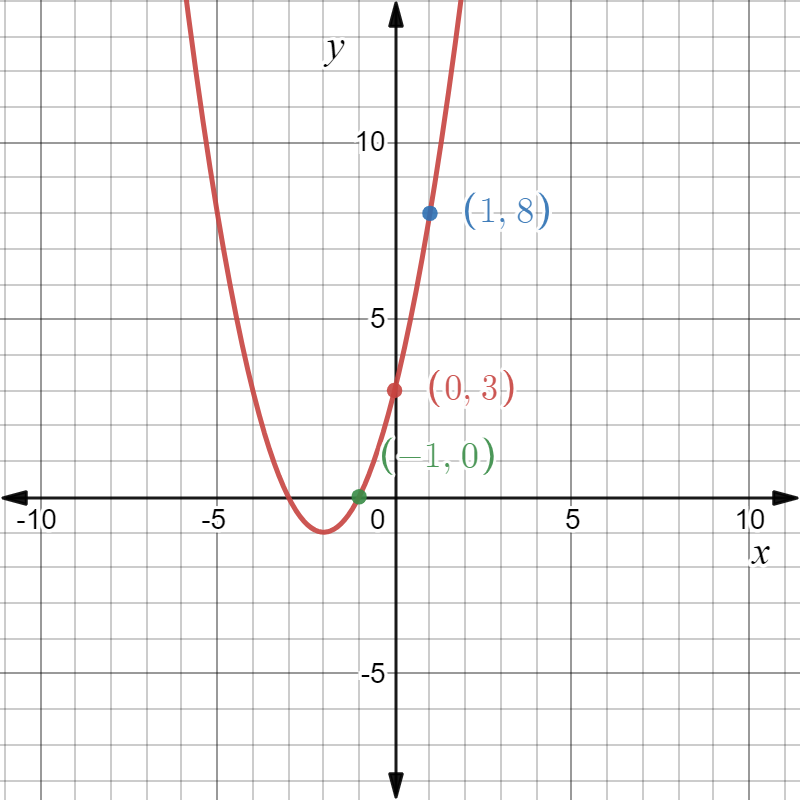
Therefore, completed the table and the graph of the function is
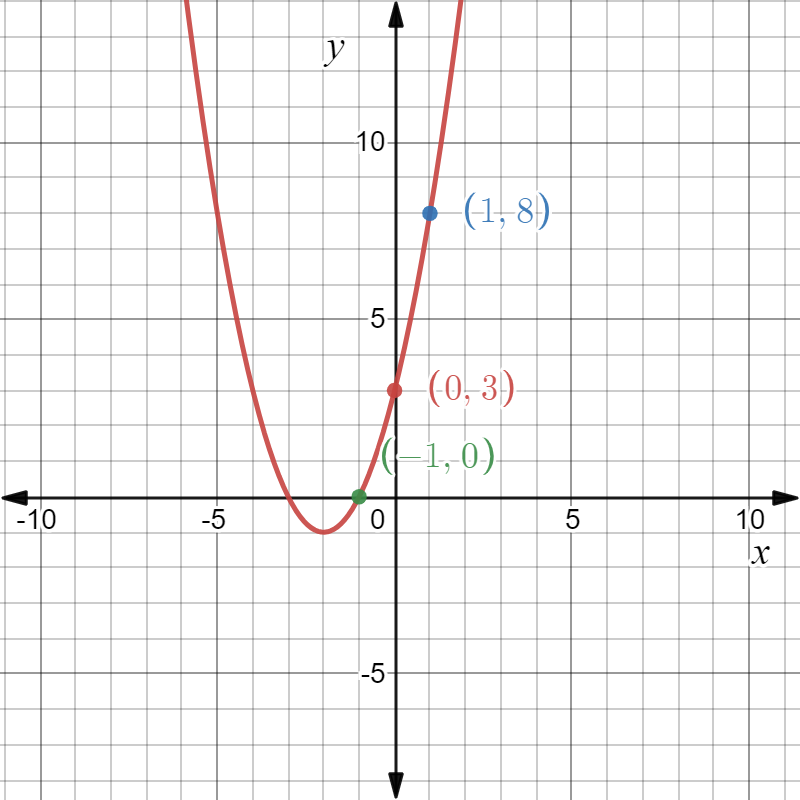
Carnegie Learning Algebra II Student Skills Practice 1st Edition Chapter 2 Exercise 2.2 Skills Practice Page 278 Problem 6 Answer
Given that f(x)=x2 and h(x)=(x+7)2
Here it is asked to complete the table and graph h(x).
First, we will complete the table.
When x=−1 then h(x)=(−1+7)2 =36
When x=−2 then h(x)=(−2+7)2 =25
When x=−3 then h(x)=(−3+7)2 =16
So the complete table is
| f(x) | → | h(x) |
| (0,0) | → | (−1,36) |
| (1,1) | → | (−2,25) |
| (2,4) | → | (−3,16) |
The required graph of h(x) is
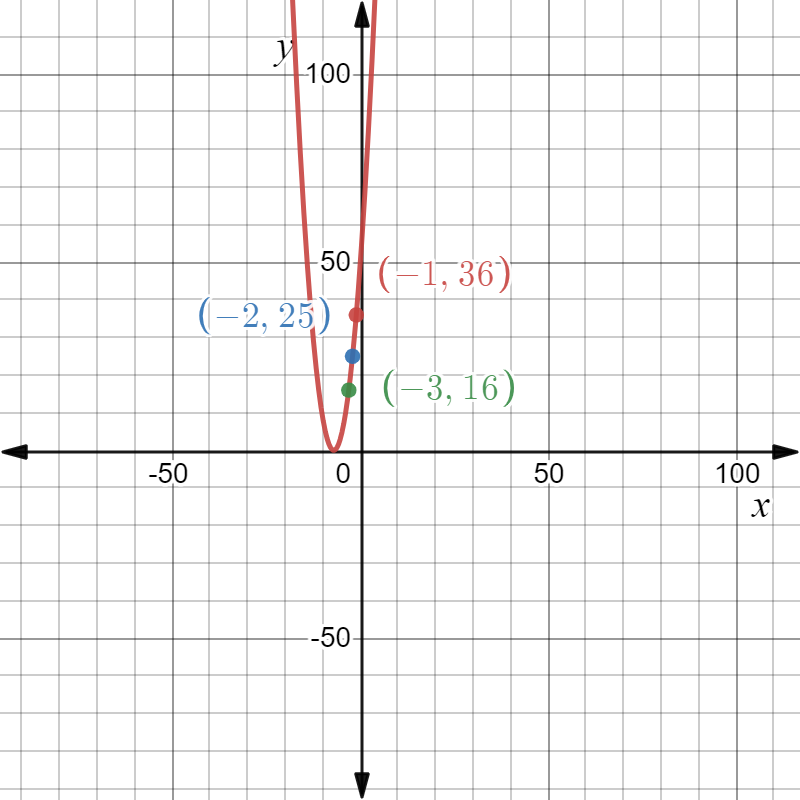
Therefore, completed the table and the graph of the function is
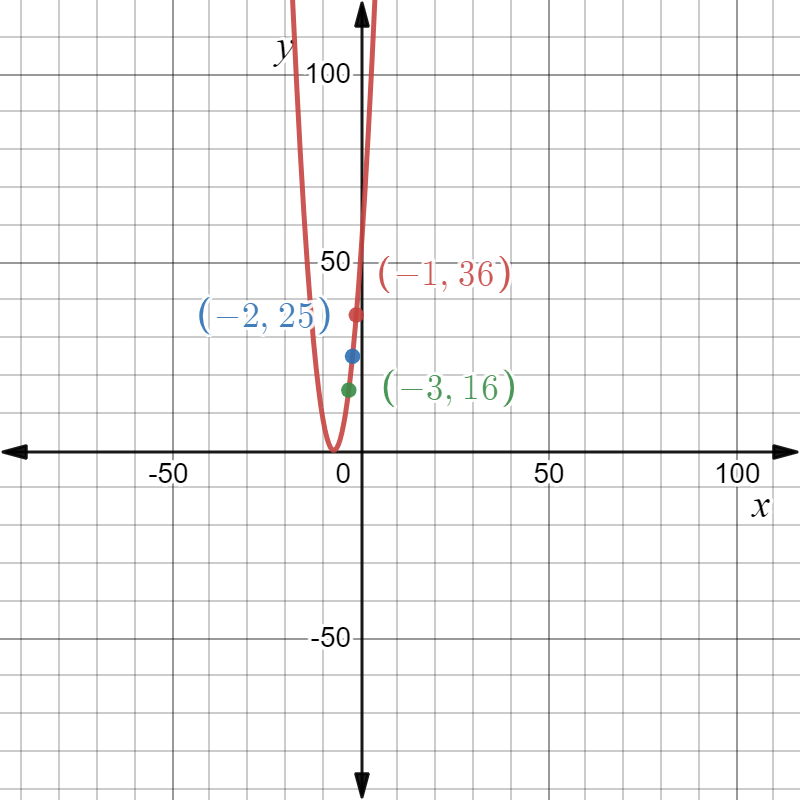
Skills Practice Exercise 2.2 Answers
Page 279 Problem 7 Answer
Given that f(x)=x2 and h(x)=x2−9
Here it is asked to complete the table and graph h(x).
First, we will complete the table.
When x=0 then h(x)=02−9 =−9
When x=1 then h(x)=12−9 =−8
When x=2 then h(x)=22−9 =−5
So the required table is
| f(x) | → | h(x) |
| (0,0) | → | (0,−9) |
| (1,1) | → | (1,−8) |
| (2,4) | → | (2,−5) |
The required graph of h(x) is as shown below,
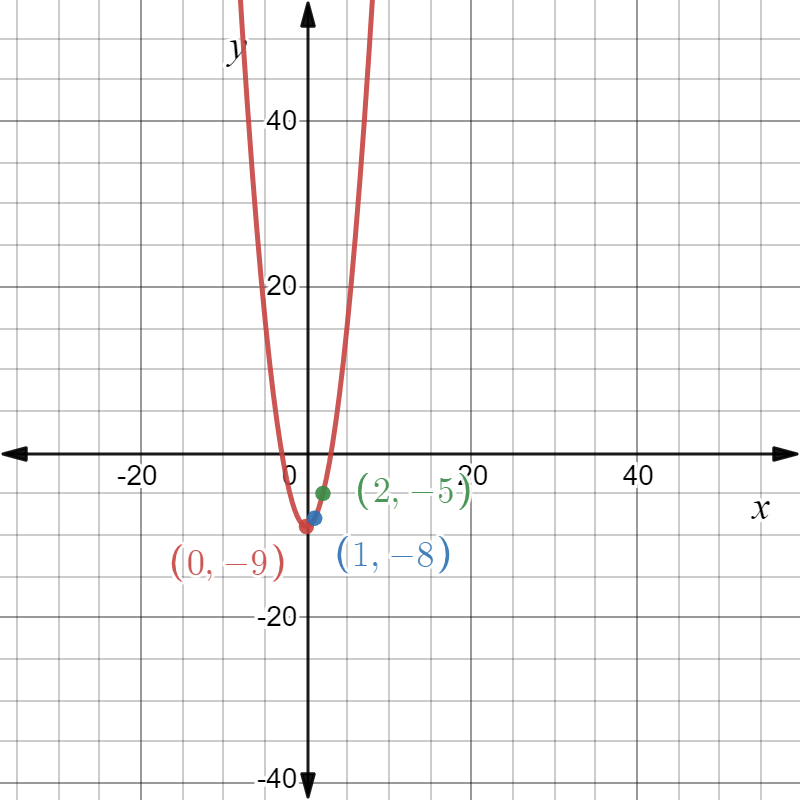
Therefore, completed the table and the graph of the function is
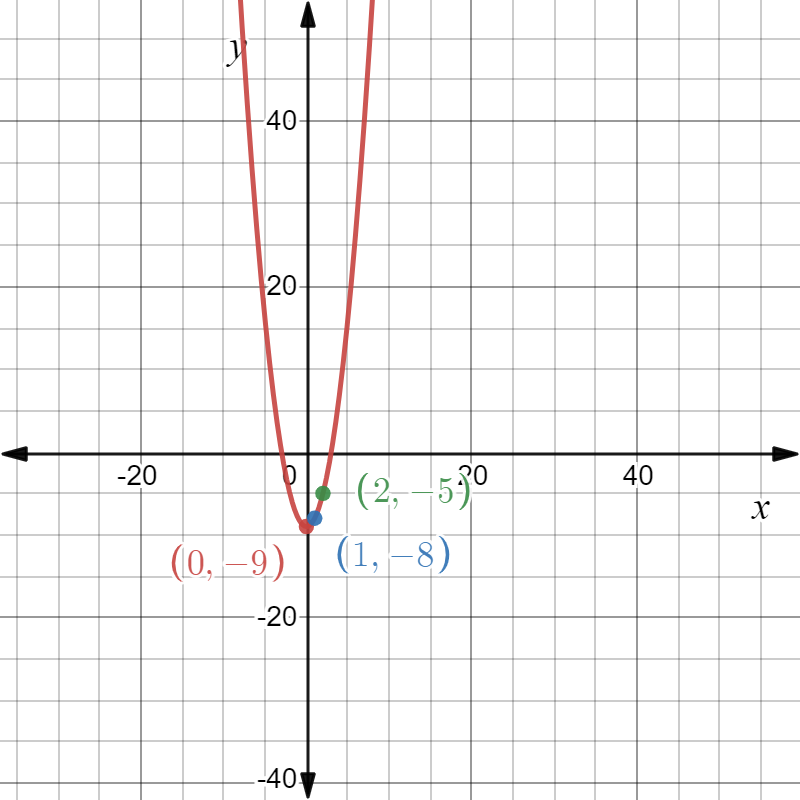
Carnegie Learning Algebra II Student Skills Practice 1st Edition Chapter 2 Exercise 2.2 Skills Practice Page 280 Problem 8 Answer
Given that
f(x)=x2 and h(x)=(x+4)2−4
Here it is asked to complete the table and graph h(x).
First, we will complete the table.
Whenx=−1 then h(x)=(−1+4)2−4 =5
When x=−2 then h(x)=(−2+4)2−4 =0
When x=−3 then h(x)=(−3+4)2−4 =−3
So the completed table is
| f(x) | → | h(x) |
| (0,0) | → | (−1,5) |
| (1,1) | → | (−2,0) |
| (2,4) | → | (−3,−3) |
The required graph of h(x) is as shown below,
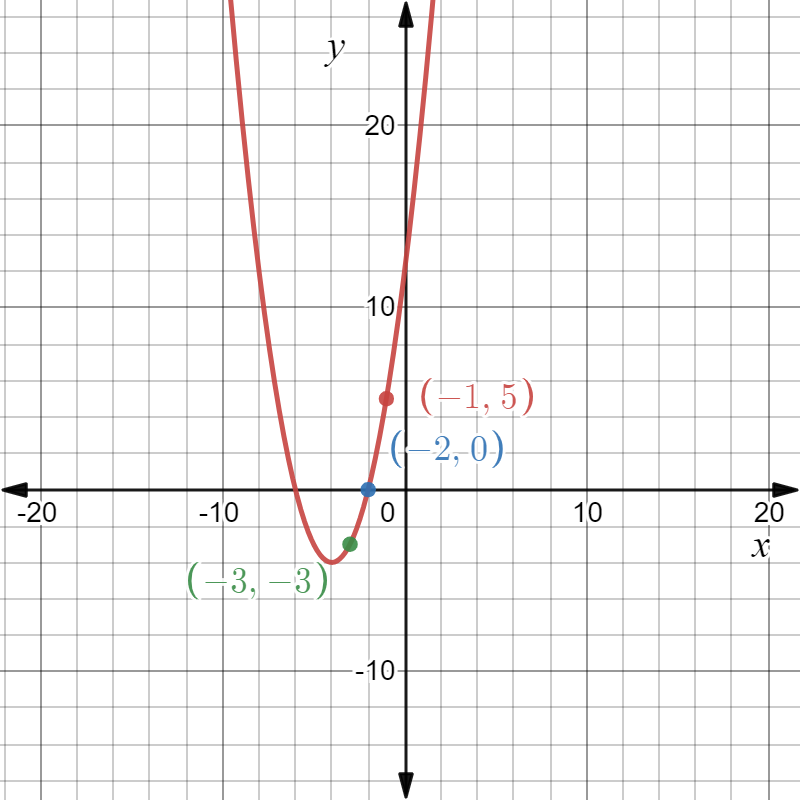
Therefore, completed the table and the graph of the function is
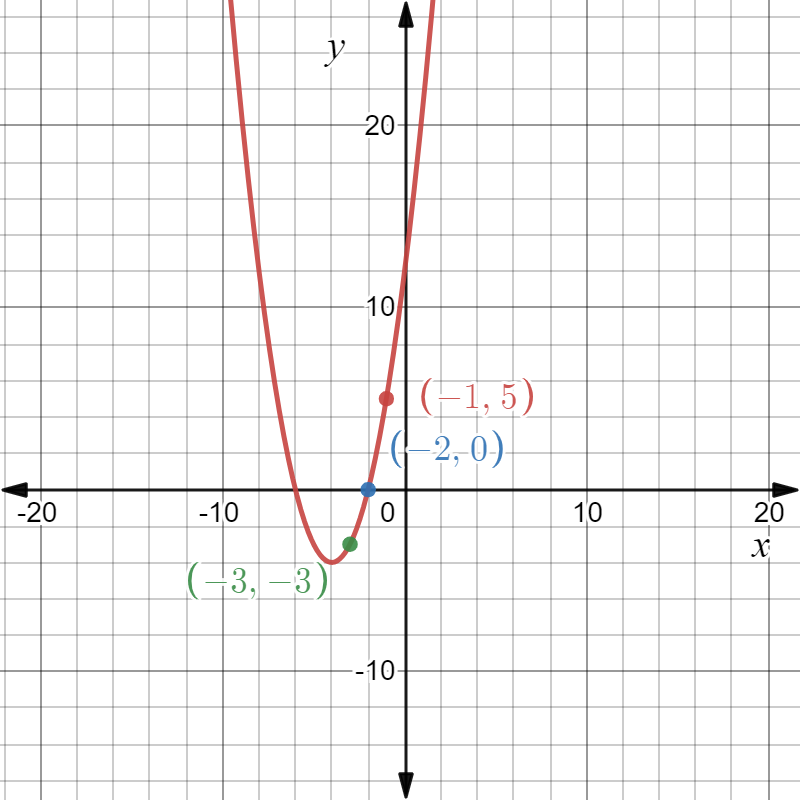
Algebra Ii Chapter 2 Skills Practice Solutions Exercise 2.2
Page 280 Problem 9 Answer
Given g(x)=Af(B(x−C))+D Where f(x)=x2
Also Given g(x)=f(x+8)−9
To determine the value of C and D
To determine the vertex of the given function compares to the vertex of f(x)
Given g(x) = f(x + 8) − 9
Compare to given g(x) = Af(B(x − C)) + D we see that
C = −8 and D = −9
Given f(x) = x2 so the vertex is (0, 0)
The vertex will be shifted from 8 units to the left and 9 units upward.
Hence the vertex for g(x) = f(x + 8) − 9 is (−8, −9)
Hence C=−9 and D=−9
The vertex for g(x)=f(x+8)−9 is (−8,−9)
Carnegie Learning Algebra II Student Skills Practice 1st Edition Chapter 2 Exercise 2.2 Skills Practice Page 280 Problem 10 Answer
Given g(x)=A f(B(x−C))+D Where f(x)=x2
Also Given g(x)=f(x−5)−11
To determine the value of C and D
To determine the vertex of the given function compares to the vertex of f(x)
Given g(x) = f(x − 5) − 11
Compare to given g(x) = A f(B(x − C)) + D we see that
C = 5 and D = −11
Given f(x) = x2 so the vertex is (0, 0)
The vertex will be shifted shifted from 5 units to the right and 11 units downward.
Hence the vertex for g(x) = f(x − 5) − 11 is (5, −11)
The vertex for g(x) = f(x − 5) − 11 is (5, −11)
Hence C = 5 and D = −11
Page 280 Problem 11 Answer
Given g(x)=A f(B(x−C))+D Where f(x)=x2
Also Given g(x)=f(x−6)+10
To determine the value of C and D
To determine the vertex of the given function compares to the vertex of f(x)
Given g(x) = f(x − 6) + 10
Compare to given g(x) = A f(B(x − C)) + D we see that
C = 6 and D = 10
Given f(x) = x2 so the vertex is (0, 0)
The vertex will be shifted shifted from 6 units to the right and 10 units upward.
Hence the vertex for g(x) = f(x − 6) + 10 is (6, 10)
Hence C = 6 and D = 10
The vertex for g(x) = f(x − 6) + 10 is (6, 10)
Page 277 Problem 12 Answer
Given g(x) = A f(B(x − C)) + D Where f(x) = x2
Also Given g(x)=f(x+2)+3
To determine the value of C and D
To determine the vertex of the given function compares to the vertex of f(x)
Given g(x) = f(x + 2) + 3
Compare to given g(x) = A f(B(x − C)) + D we see that
C = −2 and D = 3
Given f(x) = x2 so the vertex is (0, 0)
The vertex will be shifted shifted from 2 units to the left and 3 units upward.
Hence the vertex for g(x) = f(x + 2) + 3 is (−2, 3)
Hence C = −2 and D = 3
The vertex for g(x) = f(x + 2) + 3 is (−2, 3)
Page 281 Problem 13 Answer
Given g(x)=A f(B(x−C))+D Where f(x)=x2
Also Given g(x)=f(x+4)−2
To determine the value of C and D
To determine the vertex of the given function compares to the vertex of f(x)
Given g(x) = f(x + 4) − 2
Compare to given g(x) = A f(B(x − C)) + D we see that
C = −4 and D = −2
Given f(x) = x2 so the vertex is (0, 0)
The vertex will be shifted shifted from 4 units to the left and 2 units downward.
Hence the vertex for g(x) = f(x + 4) − 2 is (−4, −2)
Hence C = −4 and D = −2
The vertex for g(x) = f(x + 4) − 2 is (−4, −2)
Carnegie Learning Skills Practice Exercise 2.2 Explained
Carnegie Learning Algebra II Student Skills Practice 1st Edition Chapter 2 Exercise 2.2 Skills Practice Page 281 Problem 14 Answer
To write b(x) in terms of f(x) by refering the given graph
From the graph we see that f(x) = x2 with vertex (0, 0)
Again grom the graph we see that the vertex of b(x) is (−5, −2)
Then b(x) = f(x + 5) − 2 by using g(x) = f((x − C)) + D Where f(x) = x , vertex of f(x) = (C, D)
Hence b(x) = f(x + 5) − 2 is the function in terms of f(x)
Page 281 Problem 15 Answer
To write c(x) in terms of f(x) by refering the given graph
From the graph we see that f(x) = x2 with vertex (0, 0)
Again from the graph we see that the vertex of c(x) is (0, −6)
Then c(x) = f(x) − 6 by using g(x) = f((x − C)) + D Where f(x) = x , vertex of f(x) = (C, D)
Hence c(x) = f(x) − 6 is the function in terms of f(x)
Page 281 Problem 16 Answer
To write d(x) in terms of f(x) by refering the given graph
From the graph we see that f(x) = x2 with vertex (0, 0)
Again from the graph we see that the vertex of d(x) is (4, 3)
Then d(x) = f(x − 4) + 3 by using g(x) = f((x − C)) + D Where f(x) = x , vertex of f(x) = (C, D)
Hence d(x) = f(x − 4) + 3 is the function in terms of f(x)
Carnegie Learning Algebra II Student Skills Practice 1st Edition Chapter 2 Exercise 2.2 Skills Practice Page 281 Problem 17 Answer
To write d(x) in terms of b(x) by refering the given graph
From graph we see that b(x) = f(x + 5) − 2 with the vertex (−5, −2)
Again from the graph we see that the vertex of d(x) is (4, 3)
Then d(x) = b(x − 4) + 3 by using the result g(x) = f((x − C)) + D Where f(x) = x , vertex of f(x) = (C, D)
Hence d(x) = b(x − 4) + 3 is the function in terms of g(x)
Page 281 Problem 18 Answer
Here, we are given graphs of the parent quadratic functions along with its transformations.
We have to analyze the graph and write the function c(x) in terms of b(x).
So, we will first determine the coordinates of the vertices of both the graphs and using these, we will determine the translation taking place.
Then, we will be able to express c(x) in terms of b(x).
So, we observe that the vertex of function c(x) is at(−5,−2) and that of b(x) is at(−6,0).
So, there is a vertical translation by 4 units up followed by a horizontal translation by 5 units towards the right of the function c(x) as compared to b(x).
So, the function c(x) can be written in terms ofb(x) as⇒c(x)=b(x−5)−4.
Analyzing the graph, the function c(x) is written in terms of b(x) as follows:c(x)=b(x−5)−4.
Chapter 2 Exercise 2.2 Skills Practice Guide
Page 281 Problem 19 Answer
Here, we are given graphs of the parent quadratic functions along with its transformations.
We have to analyze the graph and write the function b(x) in terms of c(x).
So, we will first determine the coordinates of the vertices of both the graphs and using these, we will determine the translation taking place.
Then, we will be able to express b(x) in terms of c(x).
So, we observe that the vertex of function b(x) is at (5,−2) and that of c(x) is at (0,−6).
So, there is a vertical translation by 4 units below followed by a horizontal translation by 5 units of the function b(x) as compared to c(x).
So, the function b(x) can be written in terms of c(x) as⇒b(x)=c(x+5)+4
Analyzing the graph, the function b(x) is written in terms of c(x) as follows:b(x)=c(x+5)+4.
